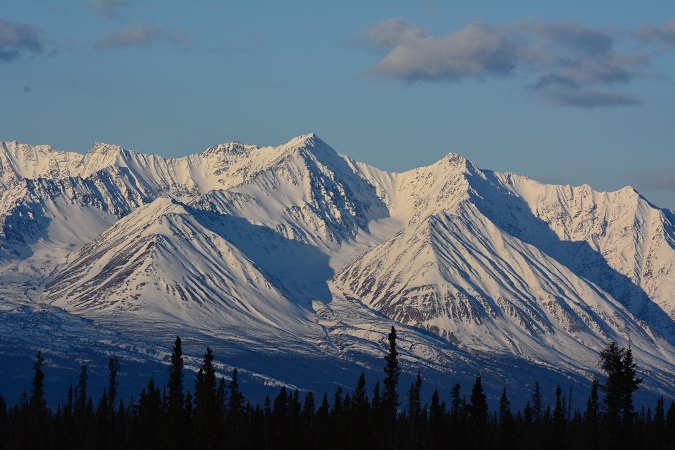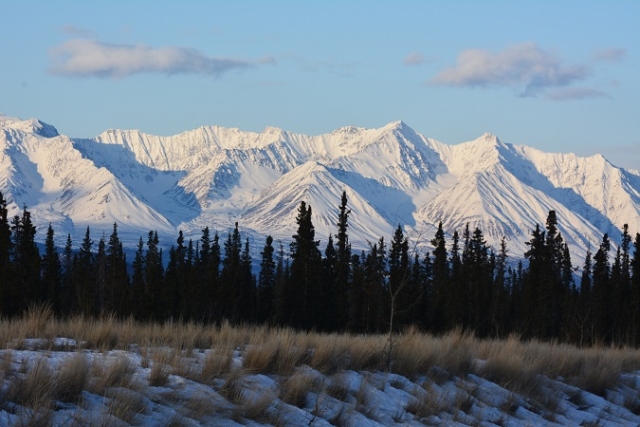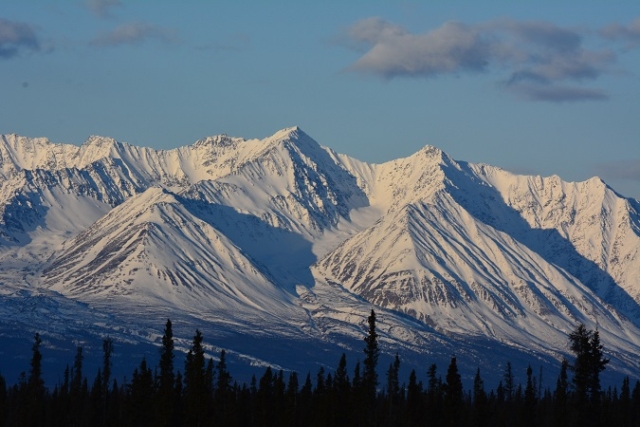
Beautiful Yukon
Photos and facts about Yukon Territory in Canada’s north. Updated June 2022
The southern Yukon is beautiful beyond words, so I won’t try to describe it. Instead, look at the photos and see for yourself.
The above photos were taken near Whitehorse. Those below were taken at Kluane National Park and the surrounding area. Click the first photo to enlarge and then scroll through the others.
Some facts about the Yukon:
- The Yukon is a federal territory of Canada.
- The Yukon is officially bilingual in English and French.
- Mount Logan, in Kluane National Park, is the highest point in Canada at 5,959 m (19,551 ft) and the second-highest in North America after Denali in Alaska.
- The territory was named after the Yukon River, which means Great River in the local Gwich’in language.
- There was a massive gold rush here from 1896 to 1899.
- The population of Yukon Territory is about 43,025 (2020 census). That amounts to about one person for every ten square km (two per square mile). There are vast uninhabited spaces.
- Whitehorse is the capital.
- The second-largest place is Dawson, with a population of 1,375 (2016 census).
- Watson Lake has about 800 people (2016 census).
- The rest of the territory contains only small villages or is uninhabited.
- About 13% of the population are aboriginal people.
Tourist Activities
Tourism opportunities in winter include:
- Dogsledding
- Northern Lights (Aurora Borealis) viewing
- Snowshoeing
- Snowmobiling.
In summer, the Yukon comes alive with tourists:
- Wildlife viewing opportunities abound. I saw a Lynx, an animal which I had never seen before. White Dall Sheep live in the mountains, and there are many caribou, bears and wolves. Birding is wonderful. I saw about 800 Trumpeter Swans on a lake near Whitehorse.
- Mountain climbing
- Canoe and kayak opportunities in the many beautiful lakes and rivers.
- Territory and National Parks are some of the most beautiful in North America. There are three National Parks.
- Learn about the gold rush in Dawson City, which is still pretty much the same as it was then, with dirt streets and wooden sidewalks but fewer people. You can still stake a claim and search for gold in the Klondike.
- Learn about the aboriginal people’s culture from their museums or visit a native village.
- Besides flights to other places in Canada, there are direct flights to Frankfurt, Germany (summer only). Although Alaska is very close, flights are long and expensive as you must change planes in Vancouver, far to the south near the American border. Better to drive there. However, there is nothing to see in Alaska that Yukon does not have.
- Yukon is the start of the Dempster Highway to the Arctic coast.
- The average temperature in winter is minus 22 C, and the summer temperature is about the same without the minus sign. These are averages. It will often be closer to minus 35 in winter and can get hot spells in summer.
I could go on and on. The Yukon is beautiful, rugged, remote and incredible. Come and experience it for yourself.



